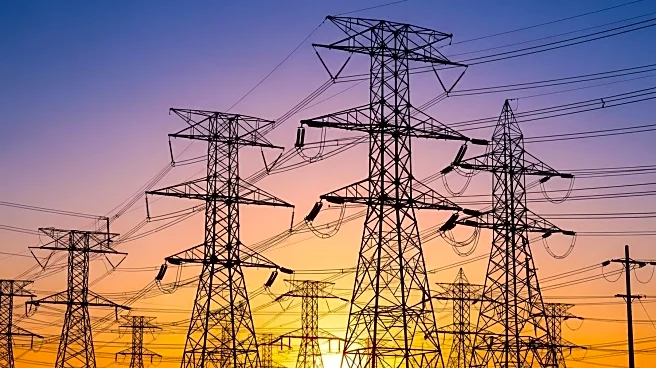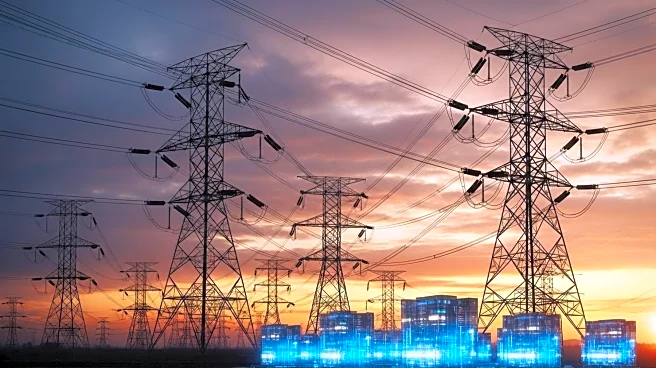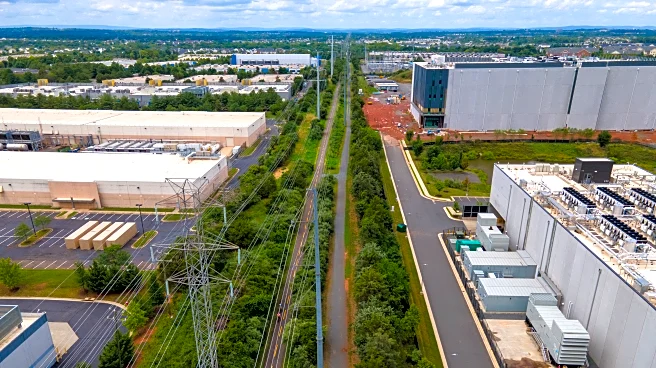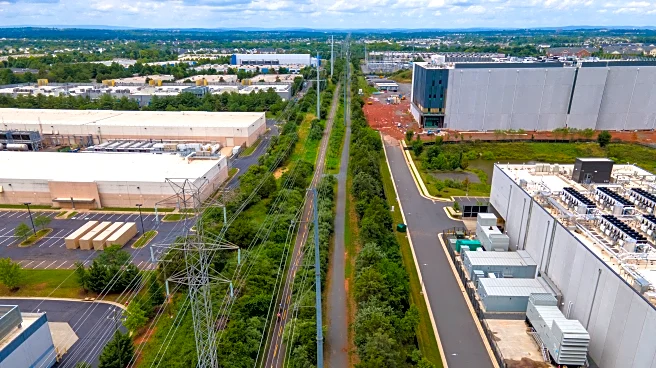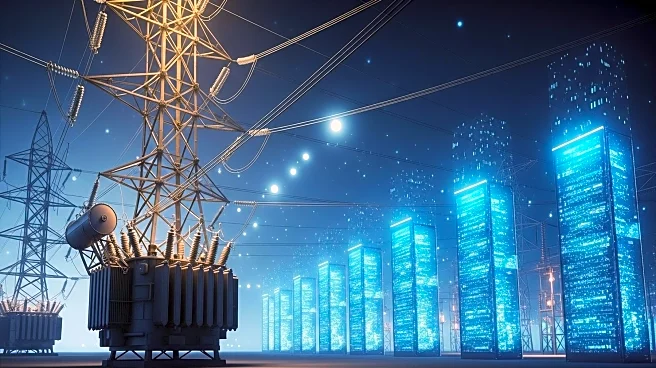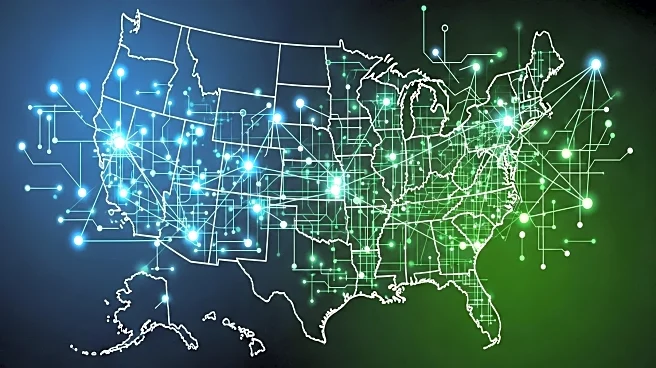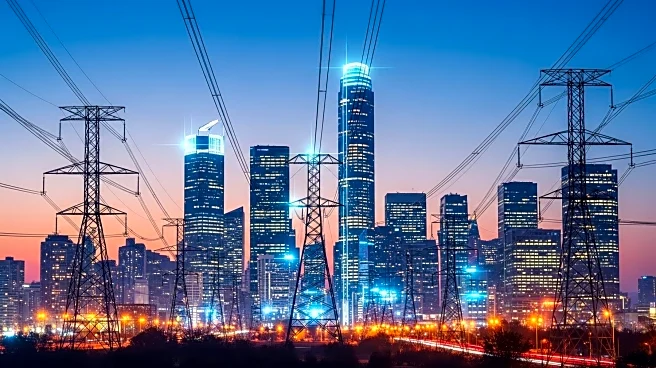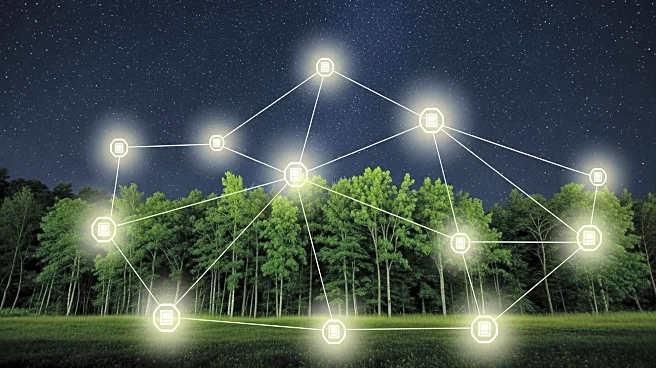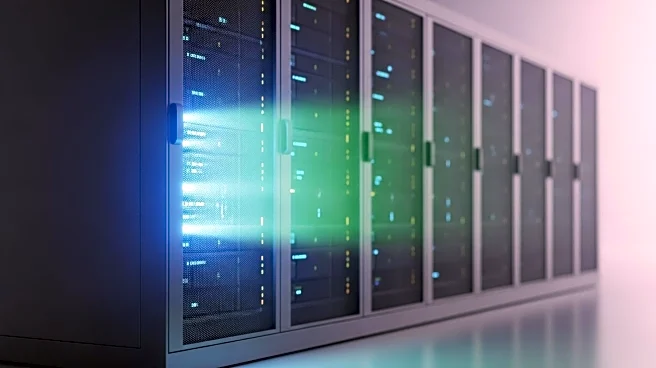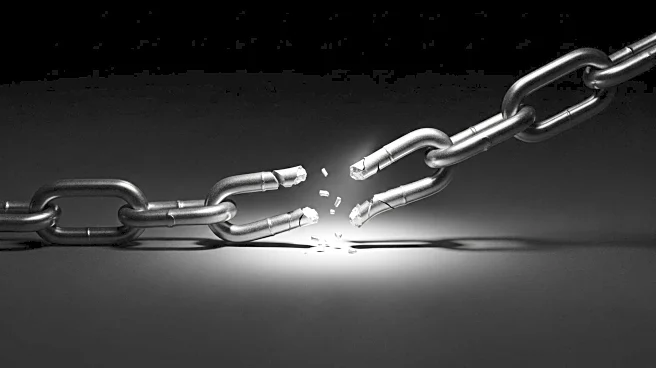What's Happening?
The rapid expansion of data centers by major technology companies is placing significant pressure on U.S. electricity grids. This surge in demand is prompting policymakers to consider drastic measures, such as disconnecting these energy-intensive facilities during power emergencies. Texas has already implemented legislation to manage power emergencies by potentially cutting off large electricity users, including data centers, to prevent blackouts like the one experienced during the 2021 winter storm. The issue is not isolated to Texas; similar concerns are emerging in the mid-Atlantic region and other states where data centers are proliferating faster than new power plants can be constructed. The Southwest Power Pool, serving 18 million people across several Great Plains states, is expanding power-reduction programs to cope with the increased demand. Meanwhile, companies like Google are negotiating power-supply contracts that include provisions to reduce electricity usage during grid stress.
Why It's Important?
The growing demand from data centers is a critical issue for U.S. electricity grids, as it threatens to overwhelm existing infrastructure. This situation has significant implications for energy policy, economic stability, and consumer electricity costs. If not managed properly, the increased demand could lead to more frequent and severe power outages, affecting millions of residents and businesses. The potential disconnection of data centers during emergencies could also impact the operations of tech companies, which rely on a steady power supply. Furthermore, the rising electricity bills, partly attributed to the energy needs of data centers, could place an additional financial burden on consumers. The situation underscores the need for innovative solutions and investments in energy infrastructure to balance the demands of technological advancement with grid reliability and affordability.
What's Next?
As the demand for data centers continues to grow, more states may adopt policies similar to Texas, requiring large power users to reduce consumption during peak periods. The PJM Interconnection, the largest grid operator in the U.S., is considering proposals that could limit electricity guarantees for data centers during emergencies. This has sparked debate among power plant owners, tech companies, and state governments about the potential economic impacts and legal authority of such measures. Additionally, there is a push for data centers to invest in their own power sources or backup systems to alleviate grid stress. The ongoing discussions and regulatory developments will shape the future of energy management and data center operations in the U.S.
Beyond the Headlines
The situation highlights a broader challenge of balancing technological growth with sustainable energy practices. As data centers become integral to the digital economy, their environmental impact and energy consumption are under scrutiny. This could lead to increased pressure on tech companies to adopt greener practices and invest in renewable energy sources. The evolving energy landscape may also drive innovation in energy storage and efficiency technologies, potentially reshaping the power industry and influencing global energy policies.
